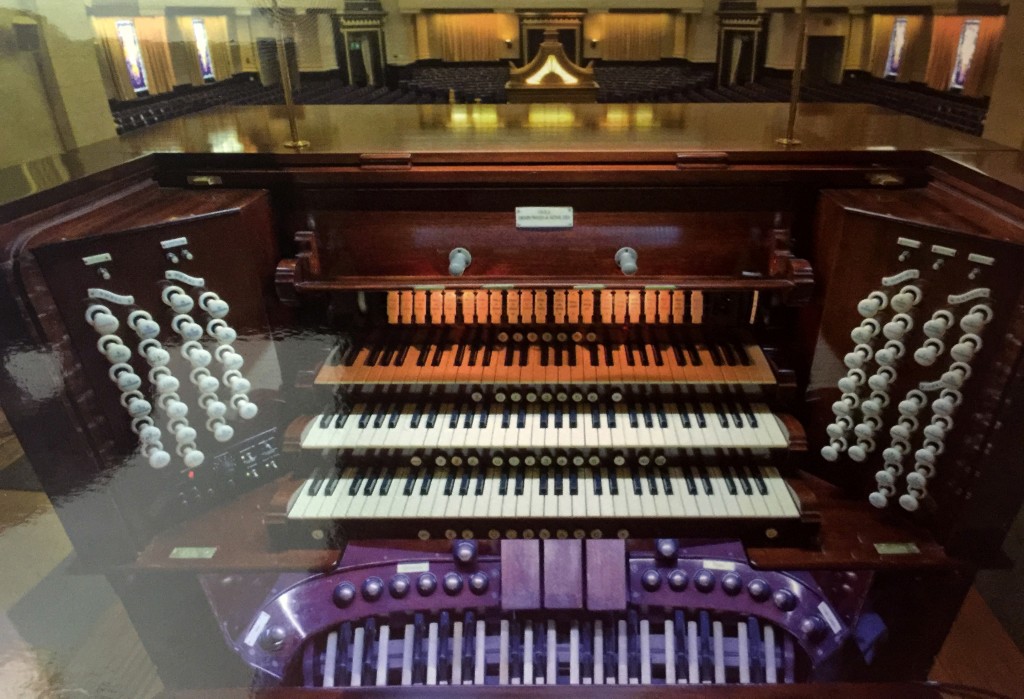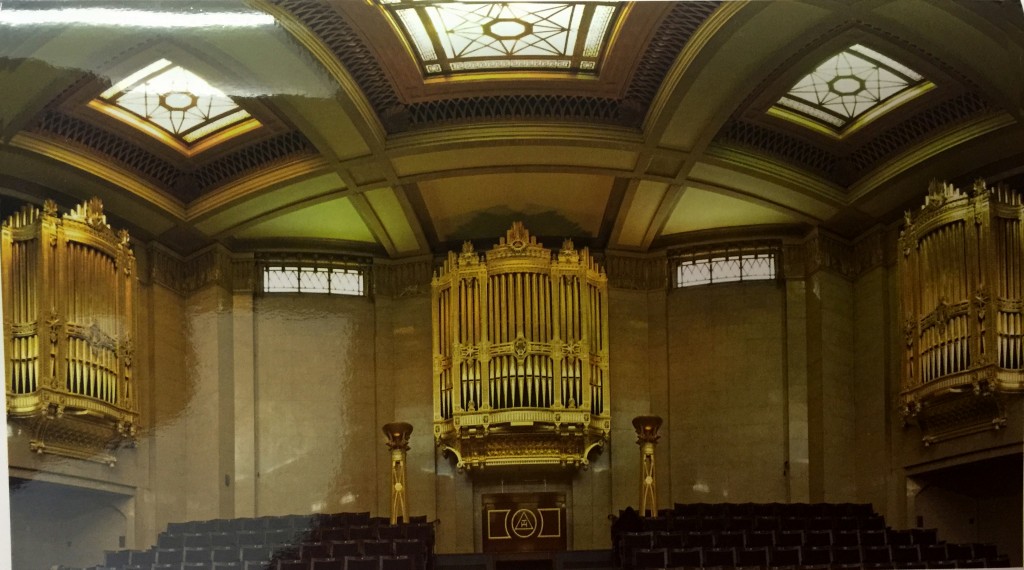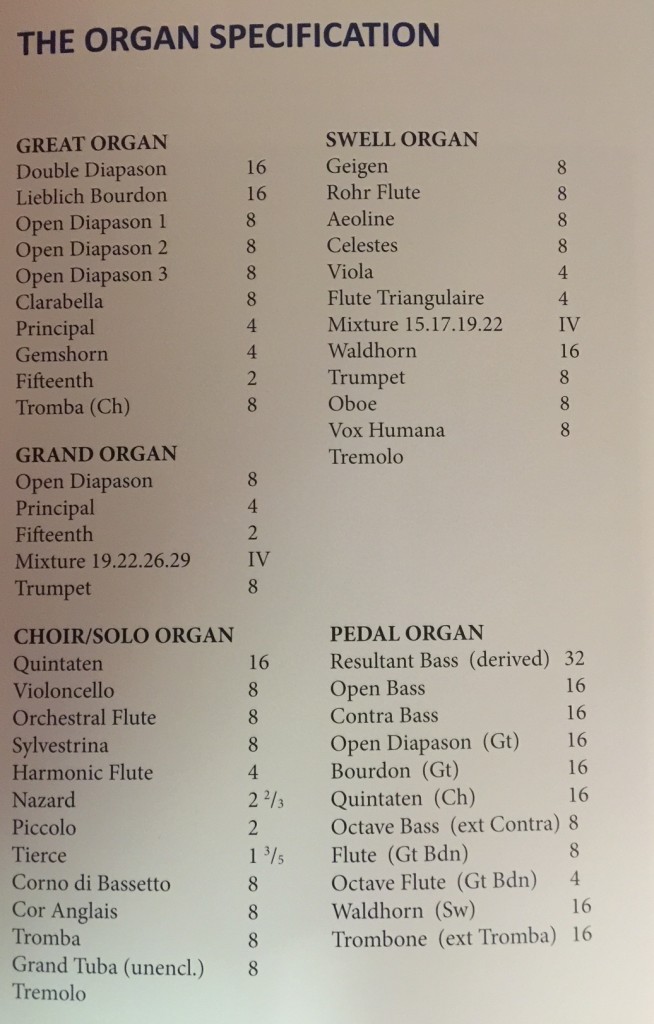Wednesday September 30th (2015) saw an early evening recital by Thomas Trotter to celebrate the refurbishment of the Willis Organ in the main meeting room of the United Grand Lodge of England.
Built originally in 1933 it is the largest of 3 Willis organs in the building but the only one that has remained in continual use. The building is vast and highly decorated, the main hall seating well over 1000 split onto two levels of seating.
Willis was himself a Mason so he will have taken particular interest in the making of these 3 grand instruments. They drew on the very latest technology that Willis had seen on his trips to US organs and you can see in the console the influence of Skinner in its design.

The original pipe chambers situated to right and left of the main stage area presented difficulties as they are small and tapering. The organ therefore speaks away from those intended to hear it and with a full room it had more of an indistinct roar rather than a clear voice to encourage singing. Improving this without compromise to the original concept was a fundamental part of the restoration brief.
To achieve this, a complete new case has been hung on the back wall immediately above the console with a complete new chorus and a Grand Tuba. Speaking directly into the building and with the removal of hangings to improve the acoustic the additional 5 stops help the instrument reach the extremes of the building in a way the pipes in the original side cases would never achieve.

This magnificent case, has been made by a number of craftsmen, most importantly Hayles & Howe to copy the style of the original cases. Also Lawrence Beckford carved some pieces which were not on the original cases, the design being a little different as this case protrudes more from the wall. It is lavishly applied with gold leaf. A job of many weeks work for Robert Woodland know affectionately as ‘Bob the Gilder’.
An audience of well over 1000 attended the recital given by Thomas Trotter. This was made all the more interesting by the use of cameras allowing us to see both hands and feet at work.
The evening opened with an accomplished and faultless rendering of the F major Toccata BWV 540.

If you examine the stop list (pictured left) you will see an abundance of 8 ft stops most unusual in most organs of this size and to my taste, large though the stop choice is, this is not an organ best suited to Bach. Or perhaps it is the acoustic, after all rightly referred to as the most important stop that any organ can have that set the Bach slightly uncomfortably for me.
In contrast later in the programme we heard Trotters arrangement of the Knightsbridge March by Eric Coates and here the organ revelled in its job making a sound that was exciting and appropriate to the space and the music.
So as with every instrument I have the pleasure of listening to this one has its own unique personality that all involved in the project must be greatly congratulated for brining out. A piece of our organ heritage that will now hopefully carry on for a further 80 years before a future generation have the challenge of deciding on what treatment the grand old lady will need after a second lifetimes service to the Freemasonry Movement.
This concert is a prelude to the celebrations next year of the Tercentenary of the creation of the Grand Lodge on June 24 1717 when 4 London Lodges came together to form the first Grand Lodge in the world. In the Tercentenary year the Grand Lodge’s charitable giving will exceed £100 million so you get a sense of the immense scale of giving the Freemasonry movement have established.
I have had a passion for church organs since the tender age of 12. I own and run Viscount Organs with a close attention to the detail that musicians appreciate; and a clear understanding of the benefits of digital technology and keeping to the traditional and emotional elements of organ playing.



